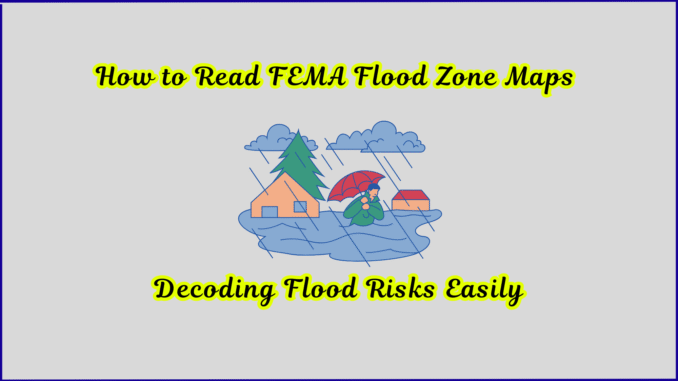
Introduction
FEMA flood zone maps are essential tools for homeowners, buyers, and insurers to assess flood risks. However, the codes and symbols can be confusing. This guide breaks down how to read FEMA flood maps, interpret flood zone designations, and take action to protect your property.
1. What Are FEMA Flood Zone Maps?
FEMA’s Flood Insurance Rate Maps (FIRMs) outline flood hazards across the U.S. These maps:
-
Identify high-risk and low-risk flood areas.
-
Determine flood insurance requirements.
-
Help communities plan for flood disasters.
2. Understanding Flood Zone Codes
FEMA uses letter codes to classify flood risks. Here’s what they mean:
High-Risk Zones (Special Flood Hazard Areas – SFHA)
-
A Zones: No base flood elevations (BFEs) determined (e.g., A, AE, AO).
-
AE Zones: Base flood elevations provided.
-
AH Zones: Shallow flooding (1-3 feet) with BFEs.
-
AO Zones: Sheet flow flooding (1-3 feet).
-
VE Zones: Coastal areas with wave hazards (highest risk).
Moderate-to-Low Risk Zones
-
B, X (Shaded): Moderate flood risk (0.2% annual chance).
-
C, X (Unshaded): Minimal flood risk.
-
D Zones: Undetermined risk (rare).
3. How to Read the Map Symbols & Features
FEMA flood maps include:
-
Floodplain boundaries (shaded vs. unshaded).
-
Base Flood Elevation (BFE): Expected water depth in a 100-year flood.
-
Floodways: Channels where water flows fastest.
-
Cross-sections & profiles: Show elevation changes.
Example: If your property is in Zone AE, check the BFE to see how high floodwaters could rise.
4. How to Check Your Property’s Flood Zone
-
Visit the Flood Map Service Center.
-
Enter your address or coordinates.
-
Review the FIRMette (mini-map) for your zone.
-
Look for BFEs, floodways, and risk zones.
Pro Tip: Local government offices (planning/zoning) can also provide flood risk data.
5. Why It Matters
-
Insurance: Homes in A/V zones often require flood insurance.
-
Safety: High-risk zones may need elevation or floodproofing.
-
Resale Value: Buyers check flood zones before purchasing.
Conclusion
Reading FEMA flood maps helps you assess risks, save on insurance, and protect your property. Always verify your zone and consult experts if unsure.
Need Help? Check FEMA’s guide or ask a floodplain manager for clarification.
Leave a Reply